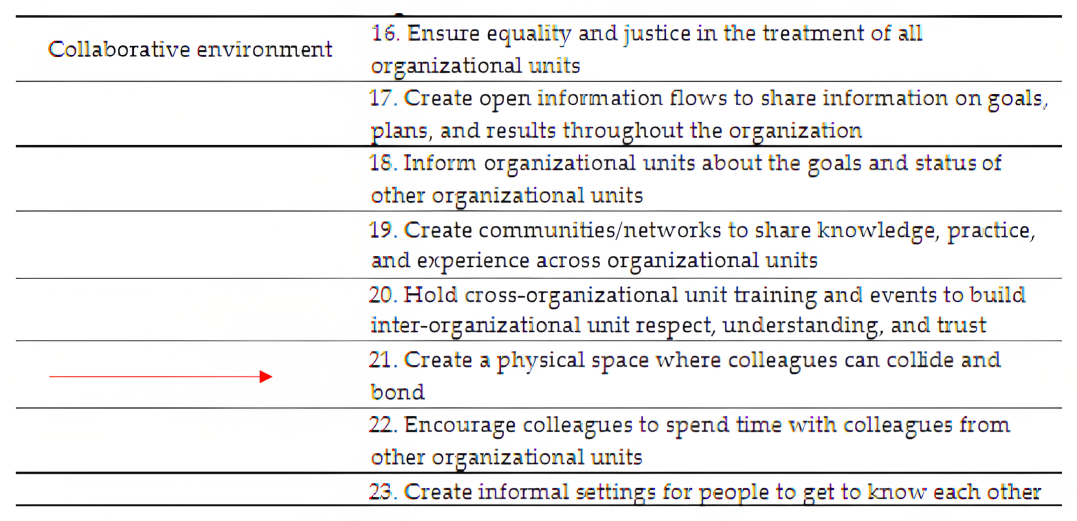Is an office a collaborative environment?
I've been seeing a number of debates on WFH vs office work and I believe people are hyper-focusing on a small component of what is needed for collaboration.
A collaborative environment alone does not produce collaboration. There are a number of other factors leaders need to take into account. Are your employees linked by strong values? Is there a model in place that enables them to work together, or are they all working on their own individual objectives? Is there effective leadership in place? Are people properly rewarded and incentivised working together?
I’ve met executives who believed that putting multiple teams together in an open-plan office would lead to better collaboration and less silos, which was not the operational reality for myself or colleagues wearing headphones in the office. I often found teams in the same office without the slightest idea of the activities, or even the roles and responsibilities of those sitting a few desks away, and the reason is that a collaborative environment alone is one of the smallest contributors to collaboration and the prevention of business silos, as I discovered from a paper by Beatrice van der Heijden from Open Universiteit Nederland, who explored collaborative effectiveness across a range of factors as seen below:
This visual is striking to me, as to me it makes sense and from my work experience I can identify with missing or unaddressed factors and why they present barriers to collaboration in the workplace. Without employees aligned by common values there is no shared identity or foundation of purpose for collaboration between organisational units. Without a collaborative operating model information and knowledge won’t flow between organisational units and the processes for collaboration won’t exist. Without reward there is no culture of collaboration that will be fostered in an organisation despite the most firm belief of management or owners that effective reward systems can be skirted over without it going unnoticed.
In the article the factor of a collaborative environment only mentions the need for a physical office space once.
Without these factors an environment is not collaborative, but an interference. Individuals in siloed organisations being bundled into close proximity will not overcome existing organisational silos brought about through the politics of organisational structure, and hierarchical trickle-down objectives tied to uncharitable performance reviews that do not recognise any effort outside of a team’s bubble of responsibility.
People need the other factors of a collaborative environment to consider ones’ environment collaborative. Communities of practice in organisations are proven academically and in practice to foster strong knowledge networks and collaborative workforces, as seen with organisations in Japan and Taiwan. Having teams understand and informed of eachother’s goals makes sense despite shared goals being more effective in encouraging collaborative between organisational units.
Sticking people in an open-plan office and expecting them to work together is doesn’t seem like effective leadership or management, as a number of other items in the figure below are likely being left unaddressed while pre-existing silos run rampant.

